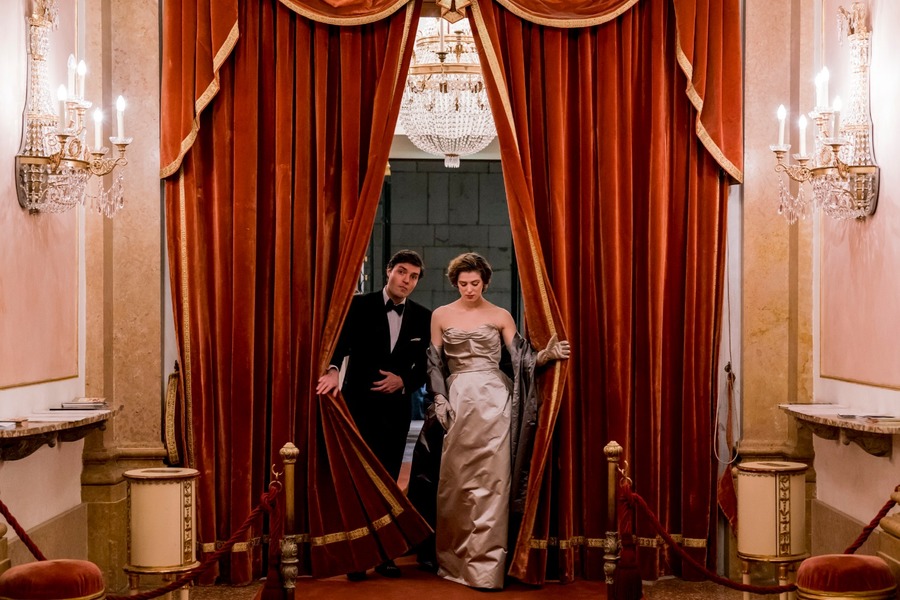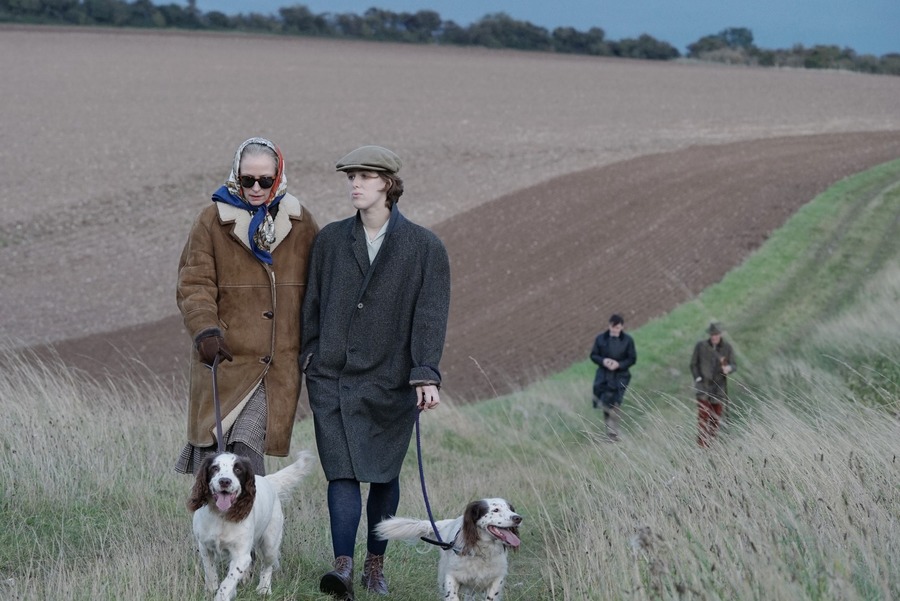Joanna Hogg on The Souvenir
Joanna Hogg's The Souvenir takes us back to her formative years as a student filmmaker and the Earth-shattering relationship she had with an older man. Fresh from filming The Souvenir Part II, Hogg tells us more about this deeply personal memory piece
Talking to Joanna Hogg about The Souvenir is an unusual experience. For most viewers, this film will feel like a singular and perfectly crafted gem, charting a young woman’s growth through a troubled relationship with an older man, but for the director it’s only half the story. She hasn’t looked at The Souvenir since she finished it and her thoughts are currently dominated by the second instalment, the filming of which has ended just before we meet. “I was actually going to preface our meeting by saying that I feel completely emptied out after shooting the second part,” she admits. “Now there's a little bit of confusion between part one and part two, because I've been completely immersed in part two and I have to try and remember what part one is and what I wanted to do with that, and how to talk about these two separate things. For me, it's all part of one piece of work.”
Hogg’s struggle to recall her film is ironic given that The Souvenir is a deeply personal memory piece. Drawn directly from experiences Hogg had as a film student in the 1980s, the film has been constructed from scenes that have the kind of specificity and precision that can only come from lived experience, but the overall shape of the film is elliptical and elusive, like snapshots of a past life. “It's interesting, because I didn't set out for it to be those snapshots, and I thought maybe this film would be less elliptical, because I'm aware of that with the other films. This was my attempt to tell more of a conventional narrative but I guess it's hard for me to do that,” Hogg says. “When you talk about the precision in one sense but the fragmented nature in another, I suppose it’s just the nature of the way I work and what I'm searching for. The way I work seems very open and allows a lot of things to come in, but that has to be very tightly controlled, so it's a mixture of extreme control on the one hand and letting things go. The result is something between those things.”
The filmmaking methods employed by Joanna Hogg have evolved over the course of her four features into something audacious and unique. After many years spent working in television, she began her debut feature Unrelated (2007) with a conventional 100-page script, which she gradually departed from as they shot, and since then she has learned to trust improvisation, instinct and spontaneity, more so with every film she has made. She no longer writes a screenplay for her films, instead compiling a document that looks more like a scrapbook with story details, descriptions and photographs, and she is careful about how much of this she shares with each member of her cast. On set, Hogg likes to create a situation and let the actors explore and discover it, capturing their immediate reactions on film with no rehearsals or even a screen test beforehand. When we see Julie (Honor Swinton Byrne) meet Anthony (Tom Burke) in The Souvenir, we're actually witnessing the first time the two leads had been face-to-face.
Hogg has always liked casting non-professional actors, but in Swinton Byrne (the daughter of the director’s lifelong friend Tilda Swinton, who also plays her onscreen mother) she has taken her boldest gamble, asking this young woman who had never acted before to give a nuanced, emotionally complex performance capable of carrying two films. Swinton Byrne was thrown in at the deep end, being cast just two weeks before shooting began and given little time to prepare.
“I did show her some of my diaries from the time,” Hogg explains. “I didn't show her so many letters but I showed her some materials so she could get an idea of who this young woman is at this point in her life. I didn't want her to know anything about the relationship because that was going to happen during the filming, when she was going to meet him [Burke] – in fact, she didn't even know it was a film about a relationship. She knew it was about a young film student and I just wanted her to have an idea of the projects and the impetus of a filmmaker and photographer. It was the creative and artistic side I wanted her to inhabit.”
Swinton Byrne's performance is a marvel – alert, vulnerable, authentic – and by casting her opposite a more experienced actor who was given much more time to develop his character, Hogg created a power dynamic that serves the central relationship. Burke has a distinctive and magnetic screen presence – Hogg says he reminds her a little of a young Orson Welles – and she worked closely with him for months to create a characterisation that was simultaneously precise and enigmatic. “I cast him quite early on and I gave him a lot of materials to use as foundation for the character, so he had voice recordings of the person he was playing, letters, photographs,” she says.
“He's an incredibly intelligent actor, and from these materials he was able to build a picture of someone that in the end was spookily close to the person I knew. It was a wonderful thing to meet Tom and spend that time with him in the lead-up to the shoot, because often I'll cast quite late in the day and won't have that opportunity, but it seemed so right with this character that he was carefully constructed. The real person was very carefully constructed, in a way, and it needed that time and energy and focus.”
'The way I work seems very open and allows a lot of things to come in, but that has to be very tightly controlled'
While The Souvenir has been crafted with all of the rigour, elegance and intelligence that we've come to expect from Joanna Hogg, admirers of her films will detect some key aesthetic differences here. For one thing, she shot it primarily on 16mm, making it the first of her features to be shot on celluloid, and that had a big impact on how she worked. “It changed a lot because I can't have such long takes,” she says. “I really liked having that discipline, actually. I liked having something telling me that a take could only be so long, the economy of it, how many rolls of film we were getting through. I found it very exciting, having those limits.”
The Souvenir is also much more varied visually than her earlier work, which often relied on static frames and long takes. In this film she uses intimate close-ups and unexpected angles to potent effect. “With those three previous films, I felt there was a pattern emerging that I consciously wanted to break and confuse and destroy. I feel like I'm pushing that even more in the second part, in terms of where to put the camera and how to shoot scenes. I'm trying to move the camera around a bit more too.”
Although she had always envisioned The Souvenir as a two-part story, Hogg didn't plan on making them as two separate productions. The practicalities of funding an independent production on this scale dictated the schedule, but she has a way of turning limitations and setbacks to her advantage. “I didn't want to have a break and certainly not a break of two years, but we just weren't able to get the commitment and raise the money for shooting two at the same time,” she says. “I think in the end it's probably a good thing, actually, because I had much more time to construct part two. At first I thought what a shame to lose momentum, but there are certain ideas that I hadn't come up with then that I'm really pleased I got a chance to do.”
Hogg won't be drawn on when we might see The Souvenir Part II; her editing process is a long and painstaking one. But when it does arrive we can rest assured that – like all of Joanna Hogg's films – it will surely be something to remember.
The Souvenir is released 30 Aug by Curzon Artificial Eye


